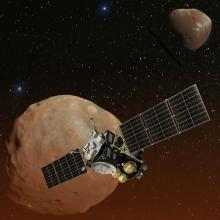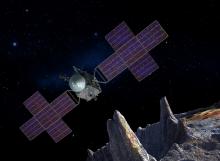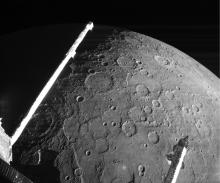Listen to today's episode of StarDate on the web the same day it airs in high-quality streaming audio without any extra ads or announcements. Choose a $8 one-month pass, or listen every day for a year for just $30.
You are here
Warp Drive
To go to the stars, you need a starship. To power it, you need something other than rockets — like warp drive. And a recent study says building a warp drive might not be as tough as it first seemed.
The closest star other than the Sun is Proxima Centauri — about four light-years away. Yet with conventional rockets, it would take 50,000 years to get there. A research project is trying to use laser-powered sails to cut that to just 20 years — but only for spacecraft weighing just a few grams.
Warp drive would enfold a spacecraft inside a “bubble” of space-time — like being in its own universe. That bubble could travel at lightspeed or faster without violating the laws of physics. Early concepts, though, suggested it would take a non-existent form of energy to create the bubble.
But a study by Erik Lentz, of a physics institute in Germany, suggested otherwise. Lentz did new calculations based on the theories of relativity. And he found that it could be possible to create a warp bubble with “normal” energy. And it could be done so that time would pass at the same rate for people inside the bubble as those on the outside.
It would take ridiculous amounts of energy to create a bubble the size of a football field — smaller than any version of the starship Enterprise. But other studies have suggested ways to cut the energy needs — perhaps to a scale that could be powered by a nuclear reactor — carrying a starship at warp speeds.
Script by Damond Benningfield






